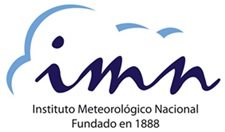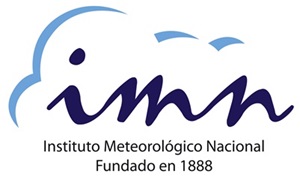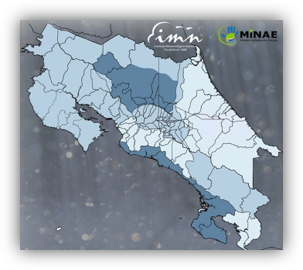Weather warnings
Jul
08
Informative Weather Notice
Sahara dust over the country
July 08th, 2025
9:50 a.m.
Diagnosis: Increases in atmospheric pressure in the Caribbean Sea accelerate the trade winds over the basin, as well as over central and northern Spain. Furthermore, a dry, stable air mass...
Jul
07
Weather Warning
Heavy downpours during the afternoon in the Pacific and northern regions
July 07th, 2025
10.40 a.m.
Discussion: Tropical Wave 13 is located in western Costa Rica, close to entering the Pacific Ocean. Although it is a weak wave, its interaction with the Intertropical Convergence Zone increases...
Jul
06
Aviso Meteorológico
Efectos de la onda tropical #13 en el país este domingo y lunes
06 de julio de 2025
11.25 am
Diagnóstico: La onda tropical #13 se localiza este domingo al oeste de Panamá, generando inestabilidad en el mar Caribe frente a la costa costarricense, lo que favorece lluvias en el Caribe Sur...
Jul
01
Weather Warning
Rainy conditions in the Caribbean and Northern Zone this Tuesday and Tropical Wave #12
Jul 01th, 2025
10 am
Diagnosis The strengthening of the trade winds over the central and northern regions of the country has produced wind gusts of up to 50 km/h in areas such as Alajuela this morning. This...
Jun
28
Weather Warning
Tropical Wave #10 over Costa Rica
June 28th, 2025
10:30 a.m.
Diagnosis: Tropical wave #10 is over the country this Saturday, causing instability in maritime areas of the Caribbean and northern parts of the Northern Zone. There has been increasing...
Weather warnings history
In this section you will find the weather warnings history.
Aviso Meteorológico-IMN-200624-5.00pm
Jun
20
Weather Warning (Update)
Heavy showers continue during the early hours of the night
June 20, 2024
5 p.m.
Discussion: Unstable conditions continue today in Costa Rica, different factors favor this pattern among them: high humidity content, the entry of sea breezes, high temperatures and areas of divergence in the upper atmosphere. This afternoon heavy rainfall has been recorded, including sectors of the North and East of the national territory. The highest accumulations so far have occurred in Goicoechea with 94 mm, Fraijanes 71 mm, Coronado 70 mm, San Pedro 64 mm, Cartago 51 mm, Braulio Carrillo 56 mm, Poás Volcano 65 mm, among others.
Forecast: Rainy activity of varying intensity will continue in the rest of the afternoon and part of the night period in the national territory.
In the North Zone, North Pacific and mountainous areas of the Caribbean, moderate to heavy rains and showers are expected, with an accumulation of 40-60 mm in 6-hour periods, and higher amounts are possible in a localized manner. Precipitation in the Caribbean may extend to the lower areas. Meanwhile, in the Central Valley, rains of varying intensity will continue, with amounts between 25-50 mm in 6-hour periods, and fog and mist banks are possible at the beginning of the first part of the night. In the Central Pacific and South Pacific, rains and showers are expected, with amounts between 30 mm and 60 mm.
Tropical wave #11 is expected to arrive on Friday, which, added to the unstable pattern and high humidity content, may generate rainy conditions in the country, especially during the afternoon.
Warning: The rains projected for urban areas may once again be precursors to flooding and sewer saturation in already recurring areas. Saturated soils are recorded in the mountains of the South Pacific, Valle del General, the mountains of the North Caribbean and the North Zone, as well as both peninsulas and near the gulfs, making them regions vulnerable to landslides and possible flooding.
Due to the above, the IMN recommends:
- Caution due to sewer saturation in places prone to this type of flooding.
- Prevention in the event of an electrical storm and seeking shelter in a safe place in the event of strong gusts of wind occurring or perceived near the storm clouds, due to the possible fall of tree branches, power lines, among others. These gusts can reach 80 km/h in some isolated cases. Stay informed through social media: Twitter: @IMNCR, Facebook: Instituto Meteorológico Nacional CR and the WEBSITE: www.imn.ac.cr
Rebeca Morera R
Meteorologist/DMSA-IMN
 RSS IMN latest alerts(Local Notification): https://www.imn.ac.cr/en/web/imn/avisos-meteorologicos/-/asset_publisher/lTlyP4wEZlDa/rss
RSS IMN latest alerts(Local Notification): https://www.imn.ac.cr/en/web/imn/avisos-meteorologicos/-/asset_publisher/lTlyP4wEZlDa/rss 


